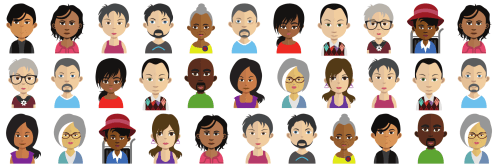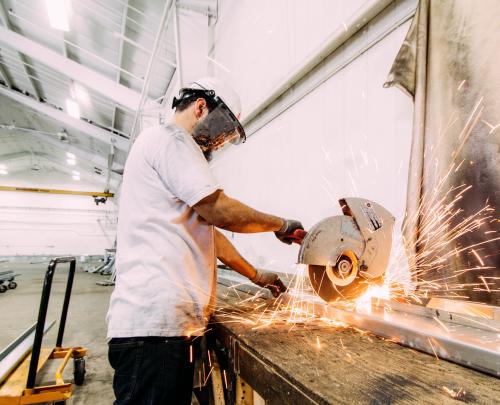Reading media accounts these days about out-of-work Americans, one is likely to emerge with the impression that the majority are older, white males who were laid off from jobs at shuttered factories in small towns, and voted for President Trump.
On the other hand, if you read stories about unemployment in America a couple of years ago, you might have concluded that younger African Americans in poor city neighborhoods, who were protesting mistreatment by police, were the real face of the nation’s jobless and disconnected.
Of course, both of these viewpoints are caricatures, reflecting the news cycle more than anything else. But they also suggest a failure of our systems to carefully analyze who wants and needs work, and to meet these individuals where they are with effective assistance.
But they also suggest a failure of our systems to carefully analyze who wants and needs work, and to meet these individuals where they are with effective assistance.
A new report by my colleagues Martha Ross and Natalie Holmes makes abundantly clear that out-of-work Americans are highly diverse, and that local practitioners need greater information, resources, and flexibility to effectively prepare and connect them to job opportunities.
Take, for instance, two communities that could mirror those described above—Macomb County, Mich., outside Detroit, and Baltimore, Md. It will come as no surprise that out-of-work individuals in these two jurisdictions are racially different. In Macomb County, 81 percent of out-of-work residents age 25 to 64 are white. In Baltimore, 70 percent of members of that same group are black. That difference reflects the disparate demographics of these two communities as much as it does the specific profile of their jobless adults.
Beyond those top-line characteristics, however, lays a more surprising picture of local out-of-work populations. In Macomb County, for instance, the majority of adults (63 percent) who are looking for work or might need work are female. They are not uniformly old; about half in the 25 to 64 age range are under the age of 45. In Baltimore, the out-of-work population is indeed younger, but educationally diverse—more than one-third have some post-secondary education. Only one-quarter are caring for children, a smaller share than in Macomb County.
These characteristics are interesting, but provide limited direction for local practitioners in workforce development and training, who must oversee dozens of overlapping efforts to help different populations access job opportunities.
The new report thus borrows a technique from consumer marketing—segmentation analysis—to identify groups of individuals in each jurisdiction who could benefit from similar interventions to prepare and connect them to jobs.
Using that technique, my colleagues segment Baltimore’s out-of-work adults into six groups. A little under one-quarter belong to a group that is young, less-educated, and racially diverse. About one-third of them lack a high school diploma, many are caring for children, and nearly half are men. In many ways, that group fits popular notions of Baltimore’s jobless population, and research points to several strategies that are effective at helping them find and keep jobs. For example, transitional jobs programs provide people with limited work experience subsidized employment and supportive services, based on the theory that the best way to learn work is by working.
Yet in Baltimore, that group of young, less-educated individuals is outnumbered slightly by a much more age-diverse group of residents who have post-secondary educational experience or degrees. Twice as many members of that group are white, and half are age 45 or older. There are far fewer types of proven workforce development strategies for this group, even though they represent a significant share of the city’s jobless population.
Macomb County, meanwhile, shares many of these same groups of out-of-work adults. But one in seven of that jurisdiction’s jobless adults belong to a very different group of moderately educated younger people. A majority of this group’s members are female (70 percent), caring for children (58 percent), and actively looking for work (56 percent). Because these individuals are younger and generally motivated to find jobs, research points to several relevant and effective interventions. Two-generation programs like CareerAdvance, for instance, prepare parents for jobs in the health care field while providing their young children with high-quality early education.
Popular media accounts of jobless Americans are hardly “fake news.” But they risk painting with too broad a brush the diverse challenges that out-of-work individuals face in getting jobs, and the diverse range of places engaged in the task of helping those individuals. Ultimately, efforts to bridge the gap between employers and people who need work must take shape locally. Better local information about who wants or needs work, and how best to help them, can help build those bridges.
The Brookings Institution is committed to quality, independence, and impact.
We are supported by a diverse array of funders. In line with our values and policies, each Brookings publication represents the sole views of its author(s).











Commentary
The surprising diversity of America’s jobless adults
June 23, 2017